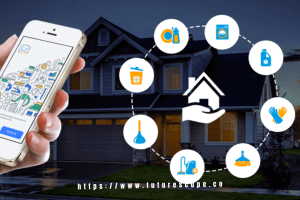What We Have Covered in This Article
Last Updated on October 27, 2019 by Editor Futurescope
Drones have attracted a great deal of interest in recent years. They are nothing new, since they were already used for military purposes, but now it seems that everyone wants one. Well, maybe not everyone, but I would not mind having one.
However, beyond creative activities, the future of the drones looks very interesting. The current developments and more sophisticated models together with current technologies enhance their possible uses. Have you ever imagined how the future could be with drones whether it will most expensive drones or not?
Drones, more than a flying gadget
When you think of a drone the normal thing is that you do it imagining a device capable of flying and, through the use of a camera, capture images from unusual points. And it is not your fault, it is what is being strengthened but behind the curtain there are other uses waiting to be shown.
In the near future, drones will no longer be military tools or devices with which to make photos, selfies (selfie drone) and videos for creative purposes to become the protagonists in actions of rescue, surveillance, investigation, etc.
One of the companies that seems willing to introduce it to its activities soon is Amazon. As you could see in a video, Amazon Prime Air is the delivery system that would use a drone to distribute the purchases made in your online store.
It would be a practical alternative with which to accelerate deliveries in those populations where possible. And I say possible because there are aspects that should be managed well. Mainly safety, because its fall or accidental shock could cause significant material damage and even personal.
Similarly, if you hand out packages you find uninteresting, Ambulance Drone may not. As their creators show in the video, using a drone like this would help people who might have a heart attack in the middle of the street. Okay, it’s a very particular situation that on many occasions might seem too futuristic. But it’s not so crazy.
In big cities it might not be necessary but think of towns or areas where it is difficult to access for topics such as snowfall, rains, complicated access roads, etc. We no longer talk about a tech craving but a way to help and even save lives.
And if you think of places of complicated access now imagine the areas to which the internet does not arrive. That is the problem that Facebook wants to solve. By using unmanned drones, in particular a larger craft than a Boeing 737 but weighing better than a car, Mark Zuckerberg’s company is pursuing an interesting project: bringing the internet everywhere.
More uses? For example, in tasks of surveillance and firefighting would also be protagonists. In those unfortunate situations, you run the risk of losing lives if you are too close to danger zones.
With the use of drones you could recognize the terrain more effectively, detect the focus, possible risks and even tackle rescue tasks. A series of actions that would help in a work that should not occur with the frequency that we live it.
As you can see, the future of the drones is more than promising. The uses that could be made of them are so varied that, even, they are already experimented with their application in agriculture or other tasks.
The 4 applications that come
Building Information Modeling
The standardized implementation of drone technology integrated with BIM technology will improve not only the construction itself but the operation and maintenance of the infrastructure.
The BIM methodology is the process of generating and managing data of a building throughout its life cycle. It requires dynamic modeling software that adds project dimensions: geometry, spatial relationships, quantities and properties of components, and so on.
The rapid and cyclical provision of high-quality geospatial data by a drone on a construction site offers a new level of engineering information, and integrated with the BIM methodology has the potential to be disruptive and transform the operational models of Companies throughout their value chain.
Automatic learning
Automated learning software uses algorithms that learn how to solve complex tasks using a process similar to that used by the human brain.
By applying this software to drones it is feasible to decrease the times and costs for processing and analyzing data collected during inspections.
Nowadays, thanks to manufacturers who make drones capable of autonomous flights, drones will be seen in the near future, flying autonomously too pre-selected points where they will obtain and analyze data on damage or suspicious activity, of which Inform the operators.
Augmented reality and virtual reality
Augmented reality is already being used to improve access to essential information on construction sites.
Visualizing building plans on mobile devices or helmets helps understand how various systems and components fit together during building.
Augmented reality is able to place a model of the structure on the scene in real time and allows workers to see the exact location, assembly instructions, material information and warnings. This makes the building process faster and easier.
And while augmented reality can help building teams, virtual reality helps designers and architects visualize the look of a complete project. This gives them the opportunity to make changes in the moment and without risk of errors or delays.
Drones as construction equipment
In the future will also be seen unmanned and autonomous airplanes flying to great heights to carry out risky tasks in small-scale construction or repair work.
They will move materials, assemble, weld and fasten parts faster than humans and without risk of death or injury.
An example of drone potential in these areas is the construction project, completed by a team from the University of Zurich, under the supervision of Professor Raffaello D’Andrea, explains the PwC report.
The objective of the project was to develop methods and techniques for aerial robotic construction.
The team was able to build a rope bridge, using an autonomous swarm of drones capable of crossing various types of obstacles.
A future that can also be scary
Like any advance, there is always a counterpart. Drones can pose a risk to the user. And no, we are not talking about the fingers of Enrique Iglesias, some fall that has caused several stitches or material damage. The main debate that opens is how they would affect the privacy of users.
Drones can be used and will be used as surveillance systems. Cameras that could follow anyone while strolling around the city, used to enter easily on private land or even used to attack – you may remember the case of the drone that sneaked into the White House – possibilities that do raise some fear .
Therefore, you need to manage well all possible consequences to properly regulate your applications. Because the doubts are many but the only certainty is that they will be a sure part of our future. Although I hope they know how to set appropriate limits. If it is not so I imagine a world like the one shown in Drone Aviation & racing sports drone.









